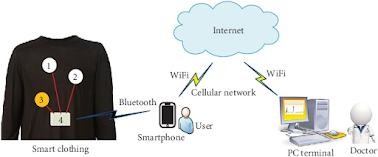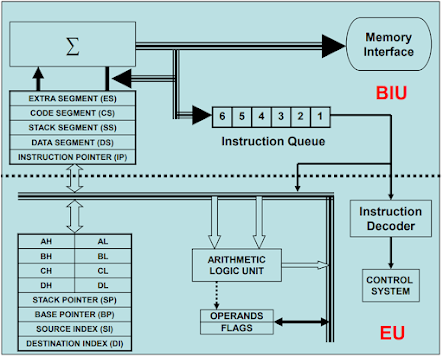AUTONOMOUS VEHICLE
A self-driving
car, also known as an autonomous vehicle (AV), driverless
car, or robotic car (robo-car), is a car incorporating vehicular automation, that is, a
ground vehicle that
is capable of sensing its environment and moving safely with little or no human input.
The future of this technology may have an impact on multiple industries and other circumstances.
Self-driving
cars combine a variety of sensors to perceive their surroundings, such as thermographic cameras, radar, lidar, sonar, GPS, odometry and inertial measurement units. Advanced control
systems interpret sensory information to identify
appropriate navigation paths, as well as obstacles and relevant signage.
Possible
implementations of the technology include personal self-driving vehicles,
shared robotaxis,
and connected vehicle platoons. Several projects to develop a fully
self-driving commercial car are in various stages of development, but there are
no self-driving cars available for everyday consumers.
Autonomy
in vehicles is often categorized in six levels, according to a system developed
by SAE International (SAE J3016, revised
periodically). The SAE levels can
be roughly understood as Level 0 - no automation; Level
1 - hands on/shared control; Level 2 - hands
off; Level 3 - eyes off; Level 4 - mind off,
and Level 5 - steering wheel optional.
As
of December 2021, vehicles operating at Level 3 and above remain a
marginal portion of the market. Waymo became the
first service provider to offer driver-less taxi rides to the general public in
a part of Phoenix, Arizona in 2020. However, while
there is no driver in the car, the vehicles still have remote human overseers. In
March 2021, Honda became
the first manufacturer to provide a legally approved Level 3 vehicle, and Toyota operated
a potentially Level 4 service around the Tokyo 2020 Olympic Village. Nuro has been allowed
to start autonomous commercial delivery operations in California in 2021. In
December 2021, Mercedes-Benz became the second
manufacturer to receive legal approval for a Level 3 complying with legal
requirements.
Terminology
and safety considerations
Modern
vehicles provide features such as keeping the car within its lane, speed
controls, or emergency braking. Those features alone are just considered
as driver assistance technologies because
they still require a human driver control while fully automated vehicles drive
themselves without human driver input.
According
to Fortune, some newer vehicles' technology names—such as AutonoDrive,
PilotAssist, Full-Self Driving or DrivePilot—might confuse the driver, who may
believe no driver input is expected when in fact the driver needs to remain
involved in the driving task. According to the BBC, confusion between
those concepts leads to deaths.
For
this reason, some organizations such as the AAA try to provide
standardized naming conventions for features such as ALKS which aim to have
capacity to manage the driving task, but which are not yet approved to be an
automated vehicles in any countries. The Association of British Insurers considers
the usage of the word autonomous in
marketing for modern cars to be dangerous because car ads make motorists think
'autonomous' and 'autopilot' mean a vehicle can drive itself when they still
rely on the driver to ensure safety. Technology able to drive a car is still in
its beta stage.
Some
car makers suggest or claim vehicles are self-driving when they are not able to manage some driving
situations. Despite being called Full Self-Driving, Tesla stated that its
offering should not be considered as a fully autonomous driving system. This
makes drivers risk becoming excessively confident, taking distracted driving behaviour, leading to crashes.
While in Great-Britain, a fully self-driving car is only a car registered in a
specific list. There have also been proposals to adopt the aviation automation
safety knowledge into the discussions of safe implementation of autonomous
vehicles, due to the experience that has been gained over the decades by the
aviation sector on safety topics.
According
to the SMMT, "There are two clear states – a vehicle is either assisted
with a driver being supported by technology or automated where the technology
is effectively and safely replacing the driver."
Challenges:
The
potential benefits from increased vehicle automation described may be limited
by foreseeable challenges such as disputes over liability, the time needed to
turn over the existing stock of vehicles from non-automated to automated, and
thus a long period of humans and autonomous vehicles sharing the roads,
resistance by individuals to forfeiting control of their cars, concerns
about safety, and the implementation of a legal framework and consistent
global government regulations for self-driving cars.
Other
obstacles could include de-skilling and lower levels of driver experience for
dealing with potentially dangerous situations and anomalies, ethical
problems where an automated vehicle's software is forced during an unavoidable
crash to choose between multiple harmful courses of action ('the trolley
problem'), concerns about making large numbers of people
currently employed as drivers unemployed, the potential for more intrusive mass
surveillance of location, association and travel as a result of police and
intelligence agency access to large data sets generated by sensors and
pattern-recognition AI, and possibly insufficient understanding of verbal
sounds, gestures and non-verbal cues by police, other drivers or pedestrians.
Possible technological obstacles
for automated cars are:
- Artificial Intelligence is still
not able to function properly in chaotic inner-city environments.
- A car's computer could potentially
be compromised, as could a communication system between cars.
- Susceptibility of the car's sensing
and navigation systems to different types of weather (such as snow) or
deliberate interference, including jamming and spoofing.
- Avoidance of large animals requires
recognition and tracking, and Volvo found
that software suited to caribou, deer,
and elk was
ineffective with kangaroos.
- Autonomous cars may require high-definition maps to operate
properly. Where these maps may be out of date, they would need to be able
to fall back to reasonable behaviors.
- Competition for the radio spectrum
desired for the car's communication.
- Field programmability for the
systems will require careful evaluation of product development and the
component supply chain.
- Current road infrastructure may
need changes for automated cars to function optimally.
- Validation challenge of Automated
Driving and need for novel simulation-based approaches comprising digital
twins and agent-based traffic simulation.
Social challenges include:
- Uncertainty about potential future
regulation may delay deployment of automated cars on the road.
- Employment – Companies working on
the technology have an increasing recruitment problem in that the
available talent pool has not grown with demand. As such, education and
training by third-party organizations such as providers of online courses
and self-taught community-driven projects such as DIY Robo cars and
Formula Pi have quickly grown in popularity, while university level
extra-curricular programmes such as Formula Student Driverless have
bolstered graduate experience. Industry is steadily increasing freely
available information sources, such as code, datasets and glossaries to
widen the recruitment pool.




Thank You Sir
ReplyDelete